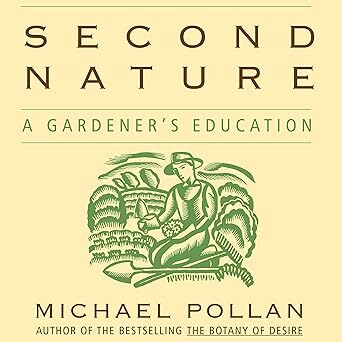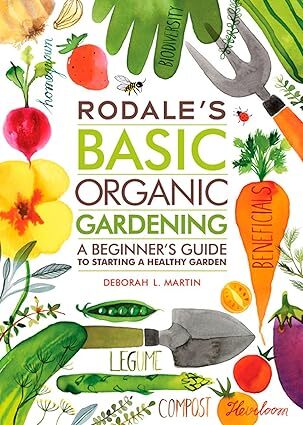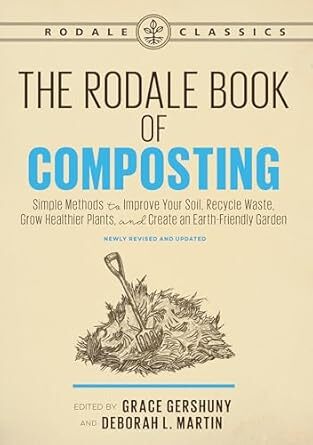Earth911’s Mitch Ratcliffe moved with his family to the banks of Elk Creek in Southern Oregon. After a couple of years of learning, he’s started Elk Creek Notes to share commentary, photos and videos, ideas, and recommendations about how to live lightly on the land to restore a healthy relationship with nature.
I was not a great gardener when living in the city. These days, I know that I have a lot to learn, and the books here are my guides. There will be so many more guides, from local animals and plants to the insects I used to try to ban from my garden.
The most rewarding gardens grow from deep attention to where we live, not just the postal address, but the watershed, the soil community, the seasonal rhythms, and the complex web of relationships that make a place unique. These seven books offer starting points for a journey into the intimate knowledge that honors the land’s inherent patterns and our human need for beauty, nourishment, and connection.
It takes decades to learn to read your bioregion’s subtle signals or understand how winter light falls differently across your yard. These books illuminate the art of becoming native to a place through careful observation and responsive cultivation.
Coleman’s work revels in the profound satisfaction of eating in rhythm with the land’s capacity across all seasons. It’s been an eye-opener for me. Rather than forcing a summer garden to produce for abundance year-round, Elliot Coleman shows that different times of year offer their own gifts—the sweetness of cold-touched Brussels sprouts, the concentrated flavor of overwintered leeks, the surprising tenderness of spinach grown in a cold frame under snow. His techniques use cold frames, row covers, and unheated greenhouses that work with winter’s energy rather than against it, creating microclimates that extend the conversation between gardener and soil.
Four-Season Harvest transforms winter from a time of scarce greens and vegetables into one of discovery, where understanding your place’s specific patterns of frost, wind, and light becomes the foundation for year-round abundance.
Another Coleman title, this practical guide introduces farming methods that build soil life rather than depleting it. His approach to the garden recognizes it is a living system where every action, from the timing of cultivation to the choice of tools, can supports or undermine the hidden relationships between plants, soil organisms, and nutrients. Using techniques like broad-forking, instead of plowing, and the strategic planting of cover crops, Coleman illuminates how human intervention can enhance rather than override natural processes.
This book offers a masterclass in reading the land’s own productivity patterns and working within them, whether you’re managing a few raised beds or several acres.
Here’s the book that kept me dreaming of country gardening. Pollan’s reflections invite us into the more profound questions that shape how we dwell in a place: What does it mean to tend the land? How do we balance our desires with the needs of other species? His examination of the American lawn tradition reveals how cultural ideas about nature shape our landscapes, often in ways that disconnect us from local ecosystems.

Through personal stories and keen observations, Pollan explores the ongoing negotiation between wildness and cultivation, helping readers develop their own philosophy of place-based gardening that honors both human creativity and ecological integrity. You won’t get step-by-step detailed guidance, but you’ll learn to think like the garden you tend.
This comprehensive reference reflects decades of learning about how to work with natural systems rather than overwhelming them. The Ultimate Encyclopedia approaches each aspect of gardening, from soil building to pest relationships (note that it’s not pest management), through the lens of understanding rather than control.
Born from the Rodale Institute’s extensive research and educational content, the book includes regional variations and climate considerations. Readers come to recognize that successful gardening requires intimate knowledge of local conditions. The book’s strength lies in the integration of traditional wisdom with contemporary understanding of soil biology, plant communities, and ecological relationships. Open to any page for invaluable insights that help gardeners deepen their place-based knowledge.
I didn’t read this first, but it’s where I would start if I had to begin learning again. Martin’s beginner-friendly guide introduces the foundational skills for developing a meaningful relationship with the land in your garden. Rather than overwhelming newcomers with complex techniques, the book builds confidence through understanding. It explores why soil health matters, how plants communicate their needs, and what different insects indicate about a garden’s biological health.

Organized by season, Basic Organic Gardening helps readers attune their gardening practices to local rhythms, and the practical projects create opportunities for direct observation and learning. This book allows gardeners to develop the patience and attention that place-based knowledge requires.
My wife laughs when I describe “lawn alternatives,” and I welcomed Penick’s guide, which opens possibilities for landscapes that reflect and support local ecosystems rather than imposing generic suburban ideals on lawn and land. This exploration of lawn alternatives, which can include native groundcovers, drought-adapted grasses, and diverse polycultures, demonstrates that front yards can give way from cookie-cutter sameness to become expressions of bioregional identity.
Lawn Gone! also addresses practical concerns like neighborhood expectations and municipal codes while inspiring readers to imagine landscapes that require less irrigation, fewer inputs, and offer more habitat for the birds, pollinators, and soil life that make a place vibrant. Penick’s approach emphasizes the aesthetic pleasures of working with rather than against local conditions.
Organic gardening in America started with Rodale, and this essential guide reveals composting as a practice of attention to cycles that transform kitchen scraps and garden debris into the foundation of soil fertility. Explore composting not just as a form of waste management but as participation in the fundamental processes that sustain all life. Rot rocks, and doesn’t have to be stinky

The Book of Composting introduces different methods that accommodate various living situations while teaching the principles of decomposition, carbon-nitrogen balance, and microbial activity. Understanding composting deepens awareness of how energy and nutrients move through local systems, creating a tangible connection to the cycles that sustain the places we call home.
Reading to Read the Land Through Gardening
These books have helped me begin to develop what we might call (small-“i”) indigenous literacy: the ability to read and respond to the particular characteristics of a place. It takes time, it requires passing healthy land to future generations. When we have practiced these ideas in a specific place for centuries, combined with evolving scientific insights available today, Americans will be prepared to approach traditional wisdom with the respect it deserves.
Coleman’s seasonal wisdom teaches attunement to light and temperature patterns. Pollan’s philosophical explorations help gardeners think critically about their relationship to the land. The Rodale books offer practical methods for supporting soil communities and plant health through observation rather than intervention.
They guide readers toward gardens that emerge from deep attention to place, building on understanding how water moves across the land, which plants support local pollinators, how soil communities change through the seasons, and what the presence of particular birds or insects reveals about ecosystem health.
Natural-setting gardening can be a practice of becoming native to where we live, developing the intimate knowledge that allows human activity to contribute to rather than detract from the abundance and resilience of local ecosystems. The result is landscapes that provide not just beauty and nourishment, but a deepening sense of belonging to the particular place we call home.
Source link
Earth911 earth911.com



